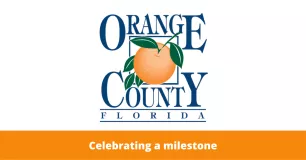
Definitions can be tricky, cautioned Adam Beck, executive director of Australia and New Zealand’s Smart Cities Council, in a Smart Cities Chronicles podcast (Episodes 2) because sometimes people can get distracted and caught up in the definition to the point that it distracts from the work being done. That was the case in the early 1990s with the nascent sustainability definition. “We have decades of literature, research, case studies and examples of how to plan and design and build good cities – sustainable cities – that cut across a whole range of verticals, whether that be public transport, water or waste management,” Beck stressed.
The three things that make a smart city -
- 'Cities' are any human community of any size and 'smart' can be technology, people and process.
- At the core of smart cities are people, and the human-centered needs of livability, workability and sustainability are at the core of every smart city program or project.
- Information and communication technology are core to technology deployment.
The three things that continue to block smart city progress -
- Smart cities can't overcome past poor planning. Example: over-building in locales vulnerable to natural disasters or building edifices to political vanity or for the sake of publicity that does not serve the needs of people.
- A smart city has to be more than technology. This seems self-evident, but the numerous cities that call themselves smart cities after deploying a pilot and living lab is depressing. This limited application ignores the key attributes of communication and information technology which is aggregation and scale (thus delivering more benefits to more city residents.) See the McKinsey&Company Report that provides research confirming that this flawed approach is a prevalent practice that needs changing.
- Information and communication technology won't overcome silos and a lack of innovation. For example - technology won’t solve a failure to share goals, budgets and data between and among city departments.
See a list of Readiness Challenge Winners here,
What are smart cities?
Imagine a world where innovation, technology and data leverage smart, sustainable cities with high-quality living and high-quality jobs. This is what smart cities aim to do. “A smart city is one that uses information and communication technology to enhance its livability, workability and sustainability,” said Adam Beck, during the podcast. That idea can be further simplified to “tech and data for good,” he said.
The concept of Smart cities started in 2012 with the Smart Cities Council's goal of delivering solutions for advancing the livability, workability, and sustainability of cities globally. To that end, it created a Smart Cities Readiness Guide – a 400-page resource – that is one of the world's first comprehensive handbooks.
What are those technology and data enablers that can be used to accelerate those desired outcomes? These will be different from one organization to the next, from one city and region to the next. But the agenda is outcomes-driven.
There are a plethora of case studies and examples of smart cities technology and data solutions that include saving people's lives, helping people alleviate poverty and homelessness, or lifting people up and creating opportunity.
In 2014, the British Standards Institution released a document called PAS 180 around smart cities vocabulary. And last year, the International Standards Organization released an international standard – ISO-37106:2021 – for guidance on establishing smart city operating models for sustainable communities.
Cities are the heartbeat
Cities are at the heart of the smart cities idea, Beck said, stressing that sometimes people feel that it's all about technology, but cities embody the systems and processes that encapsulate life. The term “city” can sometimes be polarizing for rural areas and regions in Australia, but when it comes to smart cities, the idea of “city” can be quite small and apply to small towns and regional areas as well.
“Here in New Zealand, we have substantial populations and significant economic contribution coming from rural and regional areas, and they certainly need to be at the table and have an equal opportunity to embrace technology and data to help them advance their sustainability outcomes,” Beck said.
The smart city idea applies equally to projects and individual development sites, such as “smart buildings” and “smart precincts” that include horizontal infrastructures, such as road and rail initiatives. Indeed, agriculture technology, or Ag tech, has been a major catalyst for economic enhancement in Australia. And in New Zealand, the Internet of Things is powering a new wave of management of agricultural and rural operations.
Tech and data for good
Definitions can be tricky, cautioned Adam Beck in a Smart Cities Chronicles podcast, because sometimes people can get distracted and caught up in the definition to the point that it distracts from the work being done. That was the case in the early 1990s with the nascent sustainability definition.
“I was very close to that agenda for about 15 years, both here in Australia, but also globally, when I was working in the private sector. And I saw what happened with the continual obsession with wanting to redefine sustainability,” Beck said, noting that there was a core resource and a moment in time when a working definition was established at the Rio Earth Summit in 1992. The report that articulated that definition, the Brundtland Report, clearly stated what the idea of sustainability was and what it embraced. But for the next 10 to 20 years, national governments and companies got caught up in continually redefining the idea, and precious time was lost as a result.
“I think we have been seeing a bit of that with smart cities over the past 24 months. Here in Australia, we're starting to see a lot of definitions come from different places,” he said, cautioning against getting distracted by redefining the idea of the smart city. “Tech and data for good” encapsulate the important ideas and is embraced by the Smart Cities Council, he said.
Different non-technology sectors or city building sectors are contributing to the smart cities dialogue, which is essential. But at the core of smart cities are people, and human-centered needs are at the core of every smart city, which includes ideas like the need for smart cities to be walkable.
Good cities are the starting point of course, and smart cities are not here to repair poor city planning of the past, he said, stressing that smart cities won’t repair suburban sprawl, which is resulting in obesity due to higher single-vehicle occupancy trips. “We have decades of literature, research, case studies and examples of how to plan and design and build good cities – sustainable cities – that cut across a whole range of verticals, whether that be public transport, water or waste management,” Beck stressed. "We now have the opportunity to take it even further to supercharge the good outcomes that we're trying to achieve with cities and the services that we provide our citizens by using technology and data.”
Livability, workability and sustainability core values
Although technology and data have been around for a long time, the rate of change is accelerating to the point that it can be difficult to keep up with, so the idea of smart cities is making sure that “we were very clear on our outcomes.” This is where context comes in, because the smart city fails without context, and that's why the core values of “livability workability and sustainability” must be part of every smart city, and every city should be aspiring to outcomes such as livability and sustainability.
Smart cities have always been about people and a human-centered agenda whether that means technological solutions about mitigating flooding, waste management, or health verticals. “We now have the opportunity to embrace technology and data solutions that are meaningful to the organization investing in that approach,” and being clear on those core values of livability workability and sustainability will help accelerate those desired human-based outcomes.
For more information on the Smart Cities Council, or to tune into the Smart Cities Chronicles podcast, visit www.smartcitiescouncil.com.



